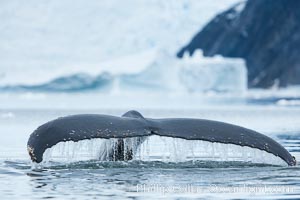
Humpback whale in Antarctica. A humpback whale swims through the beautiful ice-filled waters of Neko Harbor, Antarctic Peninsula, Antarctica.
Species: Humpback whale, Megaptera novaeangliae
Location: Neko Harbor, Antarctic Peninsula, Antarctica
Image ID: 25646
Species: Humpback whale, Megaptera novaeangliae
Location: Neko Harbor, Antarctic Peninsula, Antarctica
Image ID: 25646
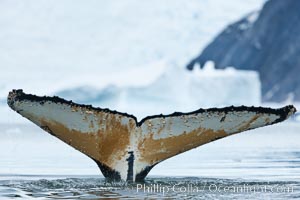
Southern humpback whale in Antarctica, with significant diatomaceous growth (brown) on the underside of its fluke, lifting its fluke before diving in Neko Harbor, Antarctica.
Species: Humpback whale, Megaptera novaeangliae
Location: Neko Harbor, Antarctic Peninsula, Antarctica
Image ID: 25647
Species: Humpback whale, Megaptera novaeangliae
Location: Neko Harbor, Antarctic Peninsula, Antarctica
Image ID: 25647
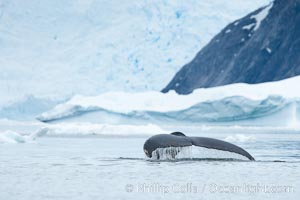
Humpback whale in Antarctica. A humpback whale swims through the beautiful ice-filled waters of Neko Harbor, Antarctic Peninsula, Antarctica.
Species: Humpback whale, Megaptera novaeangliae
Location: Neko Harbor, Antarctic Peninsula, Antarctica
Image ID: 25652
Species: Humpback whale, Megaptera novaeangliae
Location: Neko Harbor, Antarctic Peninsula, Antarctica
Image ID: 25652
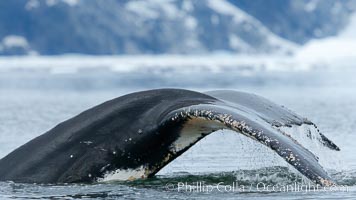
Humpback whale in Antarctica. A humpback whale swims through the beautiful ice-filled waters of Neko Harbor, Antarctic Peninsula, Antarctica.
Species: Humpback whale, Megaptera novaeangliae
Location: Neko Harbor, Antarctic Peninsula, Antarctica
Image ID: 25651
Species: Humpback whale, Megaptera novaeangliae
Location: Neko Harbor, Antarctic Peninsula, Antarctica
Image ID: 25651
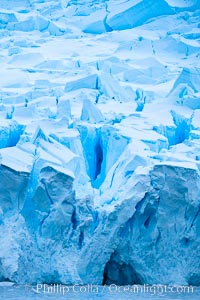
A glacier fractures and cracks, as the leading of a glacier fractures and cracks as it reaches the ocean. The pieces will float away to become icebergs.
Location: Neko Harbor, Antarctic Peninsula, Antarctica
Image ID: 25654
Location: Neko Harbor, Antarctic Peninsula, Antarctica
Image ID: 25654
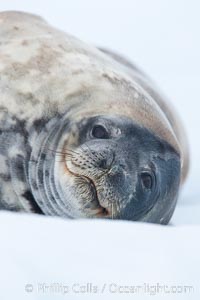
Weddell seal in Antarctica. The Weddell seal reaches sizes of 3m and 600 kg, and feeds on a variety of fish, krill, squid, cephalopods, crustaceans and penguins.
Species: Weddell seal, Leptonychotes weddellii
Location: Neko Harbor, Antarctic Peninsula, Antarctica
Image ID: 25661
Species: Weddell seal, Leptonychotes weddellii
Location: Neko Harbor, Antarctic Peninsula, Antarctica
Image ID: 25661
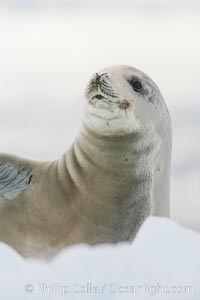
A crabeater seal, hauled out on pack ice to rest. Crabeater seals reach 2m and 200kg in size, with females being slightly larger than males. Crabeaters are the most abundant species of seal in the world, with as many as 75 million individuals. Despite its name, 80% the crabeater seal's diet consists of Antarctic krill. They have specially adapted teeth to strain the small krill from the water.
Species: Crabeater seal, Lobodon carcinophagus
Location: Neko Harbor, Antarctic Peninsula, Antarctica
Image ID: 25663
Species: Crabeater seal, Lobodon carcinophagus
Location: Neko Harbor, Antarctic Peninsula, Antarctica
Image ID: 25663
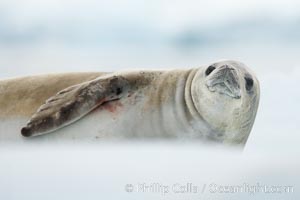
A crabeater seal, hauled out on pack ice to rest. Crabeater seals reach 2m and 200kg in size, with females being slightly larger than males. Crabeaters are the most abundant species of seal in the world, with as many as 75 million individuals. Despite its name, 80% the crabeater seal's diet consists of Antarctic krill. They have specially adapted teeth to strain the small krill from the water.
Species: Crabeater seal, Lobodon carcinophagus
Location: Neko Harbor, Antarctic Peninsula, Antarctica
Image ID: 25665
Species: Crabeater seal, Lobodon carcinophagus
Location: Neko Harbor, Antarctic Peninsula, Antarctica
Image ID: 25665
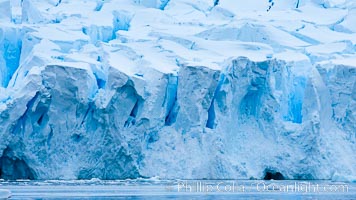
A glacier fractures and cracks, as the leading of a glacier fractures and cracks as it reaches the ocean. The pieces will float away to become icebergs.
Location: Neko Harbor, Antarctic Peninsula, Antarctica
Image ID: 25741
Location: Neko Harbor, Antarctic Peninsula, Antarctica
Image ID: 25741
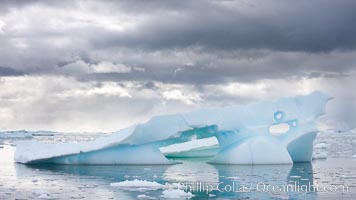
Iceberg, clouds and water, Neko Harbor, Antarctica.
Location: Neko Harbor, Antarctic Peninsula, Antarctica
Image ID: 25662
Location: Neko Harbor, Antarctic Peninsula, Antarctica
Image ID: 25662
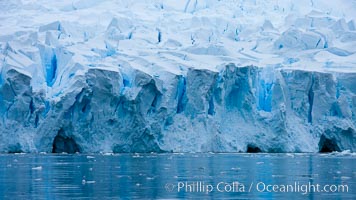
A glacier fractures and cracks, as the leading of a glacier fractures and cracks as it reaches the ocean. The pieces will float away to become icebergs.
Location: Neko Harbor, Antarctic Peninsula, Antarctica
Image ID: 25671
Location: Neko Harbor, Antarctic Peninsula, Antarctica
Image ID: 25671
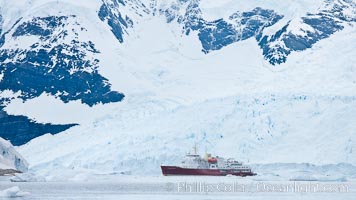
Icebreaker M/V Polar Star, at anchor in Neko Harbor.
Location: Neko Harbor, Antarctic Peninsula, Antarctica
Image ID: 25677
Location: Neko Harbor, Antarctic Peninsula, Antarctica
Image ID: 25677
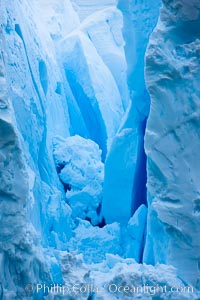
A glacier fractures and cracks, as the leading of a glacier fractures and cracks as it reaches the ocean. The pieces will float away to become icebergs.
Location: Neko Harbor, Antarctic Peninsula, Antarctica
Image ID: 25738
Location: Neko Harbor, Antarctic Peninsula, Antarctica
Image ID: 25738
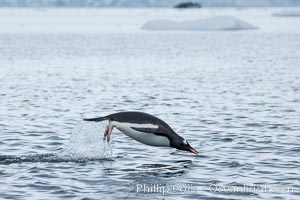
Gentoo penguin porpoising, leaping out of the water, Neko Harbor.
Species: Gentoo penguin, Pygoscelis papua
Location: Neko Harbor, Antarctic Peninsula, Antarctica
Image ID: 25749
Species: Gentoo penguin, Pygoscelis papua
Location: Neko Harbor, Antarctic Peninsula, Antarctica
Image ID: 25749
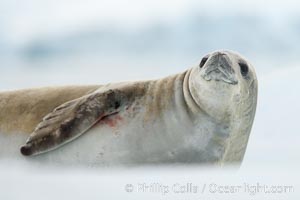
A crabeater seal, hauled out on pack ice to rest. Crabeater seals reach 2m and 200kg in size, with females being slightly larger than males. Crabeaters are the most abundant species of seal in the world, with as many as 75 million individuals. Despite its name, 80% the crabeater seal's diet consists of Antarctic krill. They have specially adapted teeth to strain the small krill from the water.
Species: Crabeater seal, Lobodon carcinophagus
Location: Neko Harbor, Antarctic Peninsula, Antarctica
Image ID: 25650
Species: Crabeater seal, Lobodon carcinophagus
Location: Neko Harbor, Antarctic Peninsula, Antarctica
Image ID: 25650
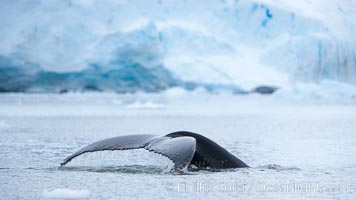
Antarctic humpback whale, raising its fluke (tail) before diving, Neko Harbor, Antarctica.
Species: Humpback whale, Megaptera novaeangliae
Location: Neko Harbor, Antarctic Peninsula, Antarctica
Image ID: 25653
Species: Humpback whale, Megaptera novaeangliae
Location: Neko Harbor, Antarctic Peninsula, Antarctica
Image ID: 25653
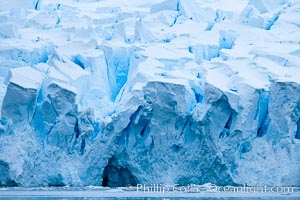
A glacier fractures and cracks, as the leading of a glacier fractures and cracks as it reaches the ocean. The pieces will float away to become icebergs.
Location: Neko Harbor, Antarctic Peninsula, Antarctica
Image ID: 25655
Location: Neko Harbor, Antarctic Peninsula, Antarctica
Image ID: 25655
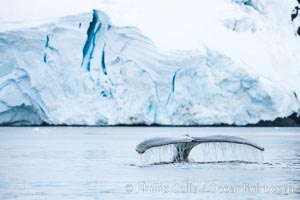
Antarctic humpback whale, raising its fluke (tail) before diving, Neko Harbor, Antarctica.
Species: Humpback whale, Megaptera novaeangliae
Location: Neko Harbor, Antarctic Peninsula, Antarctica
Image ID: 25656
Species: Humpback whale, Megaptera novaeangliae
Location: Neko Harbor, Antarctic Peninsula, Antarctica
Image ID: 25656
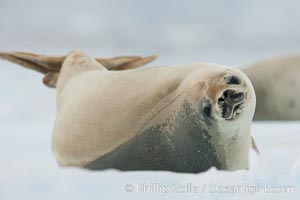
A crabeater seal, hauled out on pack ice to rest. Crabeater seals reach 2m and 200kg in size, with females being slightly larger than males. Crabeaters are the most abundant species of seal in the world, with as many as 75 million individuals. Despite its name, 80% the crabeater seal's diet consists of Antarctic krill. They have specially adapted teeth to strain the small krill from the water.
Species: Crabeater seal, Lobodon carcinophagus
Location: Neko Harbor, Antarctic Peninsula, Antarctica
Image ID: 25664
Species: Crabeater seal, Lobodon carcinophagus
Location: Neko Harbor, Antarctic Peninsula, Antarctica
Image ID: 25664
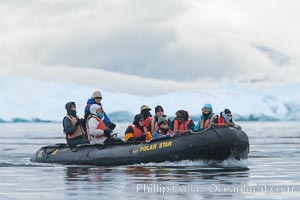
Enjoying a zodiac ride in Neko Harbor, Antarctica.
Location: Neko Harbor, Antarctic Peninsula, Antarctica
Image ID: 25666
Location: Neko Harbor, Antarctic Peninsula, Antarctica
Image ID: 25666
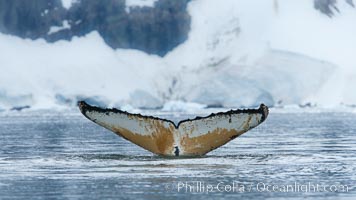
Southern humpback whale in Antarctica, with significant diatomaceous growth (brown) on the underside of its fluke, lifting its fluke before diving in Neko Harbor, Antarctica.
Species: Humpback whale, Megaptera novaeangliae
Location: Neko Harbor, Antarctic Peninsula, Antarctica
Image ID: 25667
Species: Humpback whale, Megaptera novaeangliae
Location: Neko Harbor, Antarctic Peninsula, Antarctica
Image ID: 25667
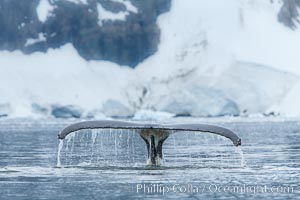
Humpback whale in Antarctica. A humpback whale swims through the beautiful ice-filled waters of Neko Harbor, Antarctic Peninsula, Antarctica.
Species: Humpback whale, Megaptera novaeangliae
Location: Neko Harbor, Antarctic Peninsula, Antarctica
Image ID: 25668
Species: Humpback whale, Megaptera novaeangliae
Location: Neko Harbor, Antarctic Peninsula, Antarctica
Image ID: 25668
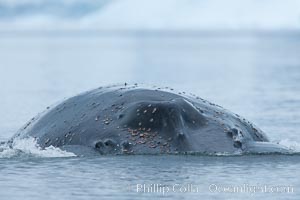
Humpback whale with barnacles, visible on the blowhole and tubercles on the dorsal surface of its head, swims toward the photographer.
Species: Humpback whale, Megaptera novaeangliae
Location: Neko Harbor, Antarctic Peninsula, Antarctica
Image ID: 25669
Species: Humpback whale, Megaptera novaeangliae
Location: Neko Harbor, Antarctic Peninsula, Antarctica
Image ID: 25669
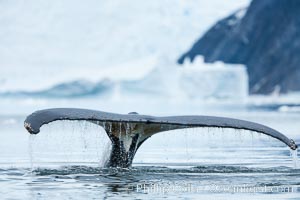
Humpback whale in Antarctica. A humpback whale swims through the beautiful ice-filled waters of Neko Harbor, Antarctic Peninsula, Antarctica.
Species: Humpback whale, Megaptera novaeangliae
Location: Neko Harbor, Antarctic Peninsula, Antarctica
Image ID: 25670
Species: Humpback whale, Megaptera novaeangliae
Location: Neko Harbor, Antarctic Peninsula, Antarctica
Image ID: 25670
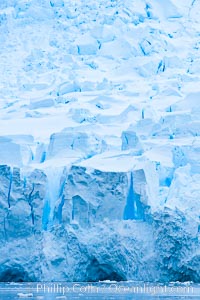
A glacier fractures and cracks, as the leading of a glacier fractures and cracks as it reaches the ocean. The pieces will float away to become icebergs.
Location: Neko Harbor, Antarctic Peninsula, Antarctica
Image ID: 25672
Location: Neko Harbor, Antarctic Peninsula, Antarctica
Image ID: 25672
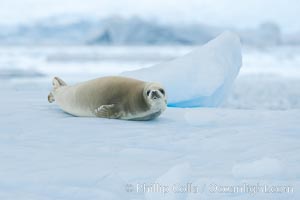
A crabeater seal, hauled out on pack ice to rest. Crabeater seals reach 2m and 200kg in size, with females being slightly larger than males. Crabeaters are the most abundant species of seal in the world, with as many as 75 million individuals. Despite its name, 80% the crabeater seal's diet consists of Antarctic krill. They have specially adapted teeth to strain the small krill from the water.
Species: Crabeater seal, Lobodon carcinophagus
Location: Neko Harbor, Antarctic Peninsula, Antarctica
Image ID: 25673
Species: Crabeater seal, Lobodon carcinophagus
Location: Neko Harbor, Antarctic Peninsula, Antarctica
Image ID: 25673
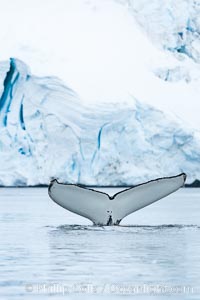
Antarctic humpback whale, raising its fluke (tail) before diving, Neko Harbor, Antarctica.
Species: Humpback whale, Megaptera novaeangliae
Location: Neko Harbor, Antarctic Peninsula, Antarctica
Image ID: 25674
Species: Humpback whale, Megaptera novaeangliae
Location: Neko Harbor, Antarctic Peninsula, Antarctica
Image ID: 25674
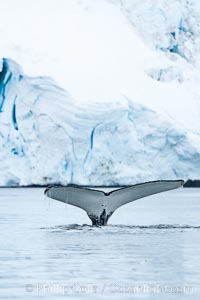
Antarctic humpback whale, raising its fluke (tail) before diving, Neko Harbor, Antarctica.
Species: Humpback whale, Megaptera novaeangliae
Location: Neko Harbor, Antarctic Peninsula, Antarctica
Image ID: 25675
Species: Humpback whale, Megaptera novaeangliae
Location: Neko Harbor, Antarctic Peninsula, Antarctica
Image ID: 25675
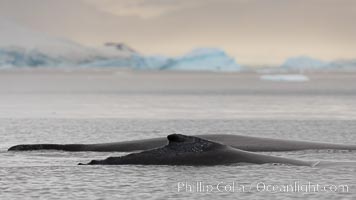
Humpback whales, Neko Harbor.
Species: Humpback whale, Megaptera novaeangliae
Location: Neko Harbor, Antarctic Peninsula, Antarctica
Image ID: 25676
Species: Humpback whale, Megaptera novaeangliae
Location: Neko Harbor, Antarctic Peninsula, Antarctica
Image ID: 25676
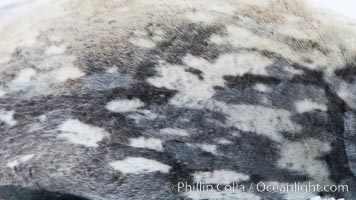
Weddell seal in Antarctica. The Weddell seal reaches sizes of 3m and 600 kg, and feeds on a variety of fish, krill, squid, cephalopods, crustaceans and penguins.
Species: Weddell seal, Leptonychotes weddellii
Location: Neko Harbor, Antarctic Peninsula, Antarctica
Image ID: 25691
Species: Weddell seal, Leptonychotes weddellii
Location: Neko Harbor, Antarctic Peninsula, Antarctica
Image ID: 25691